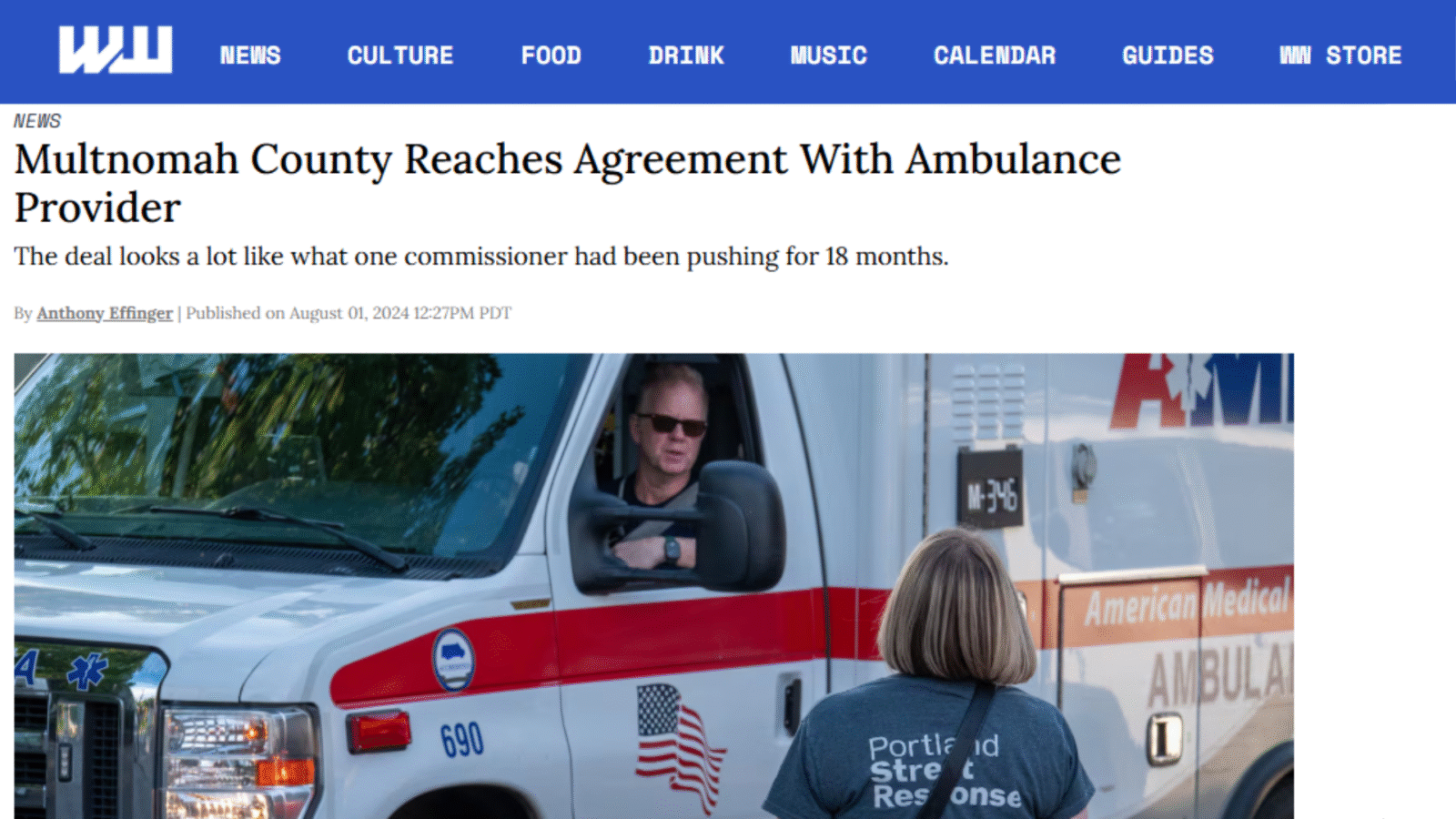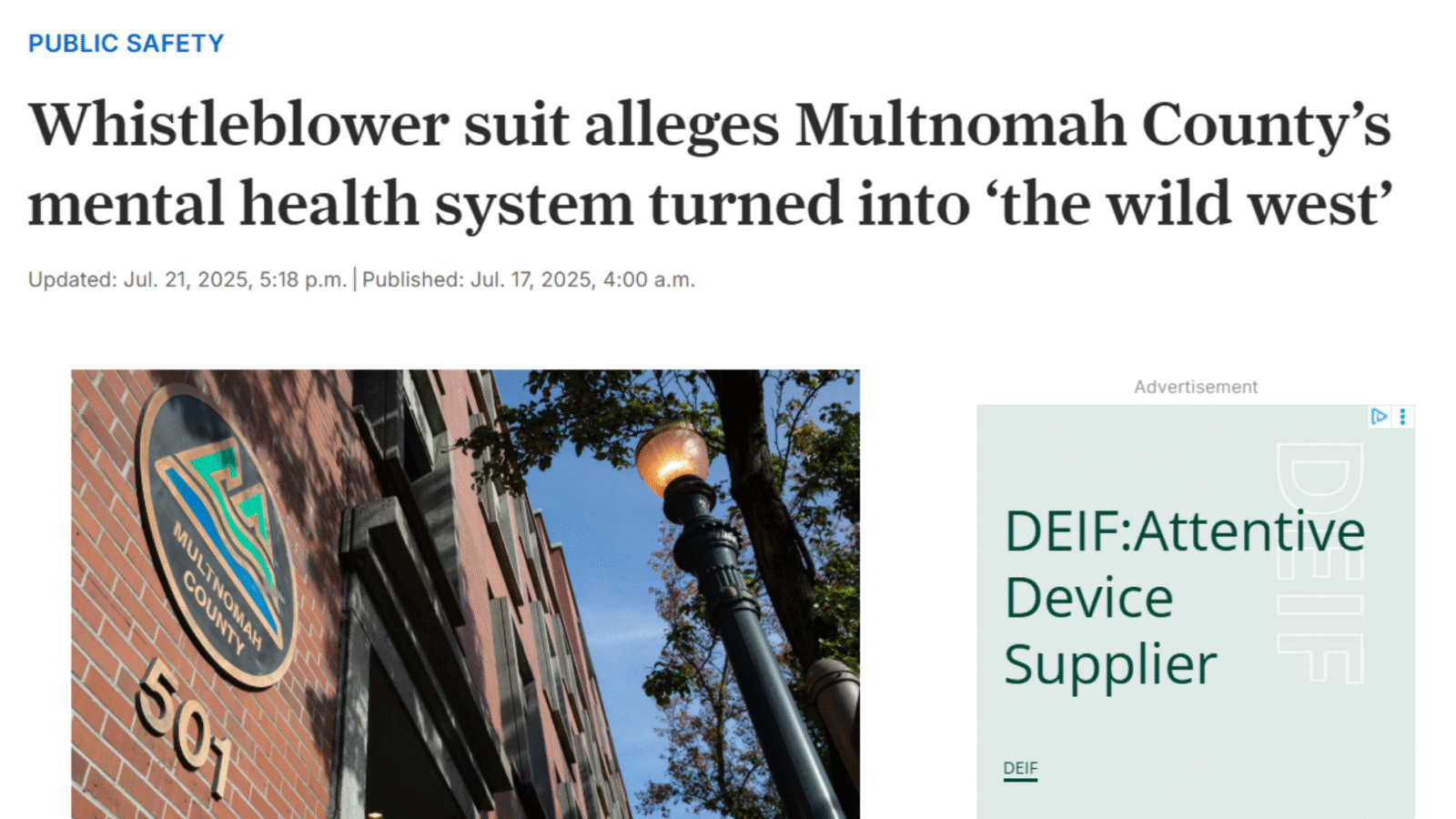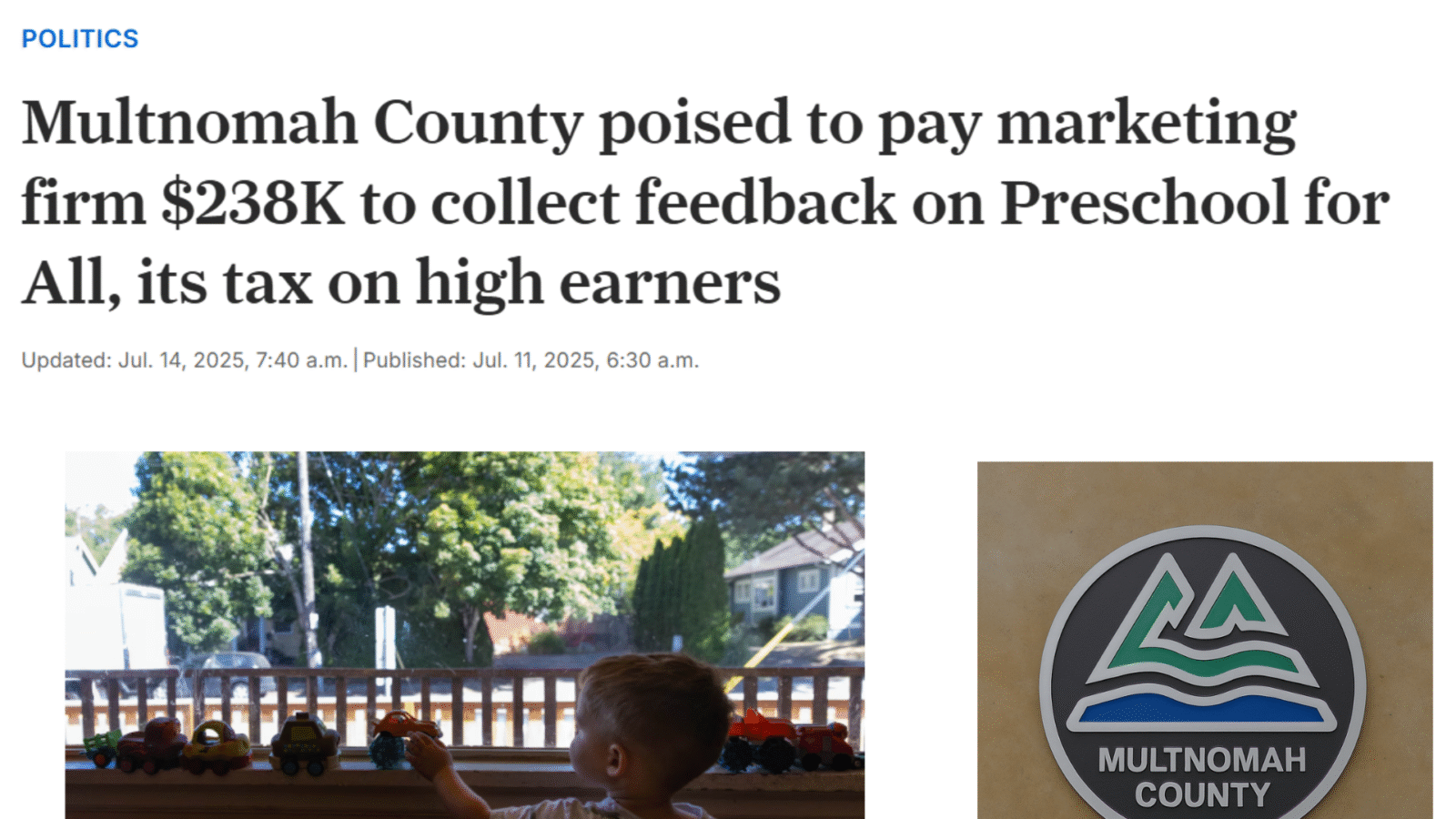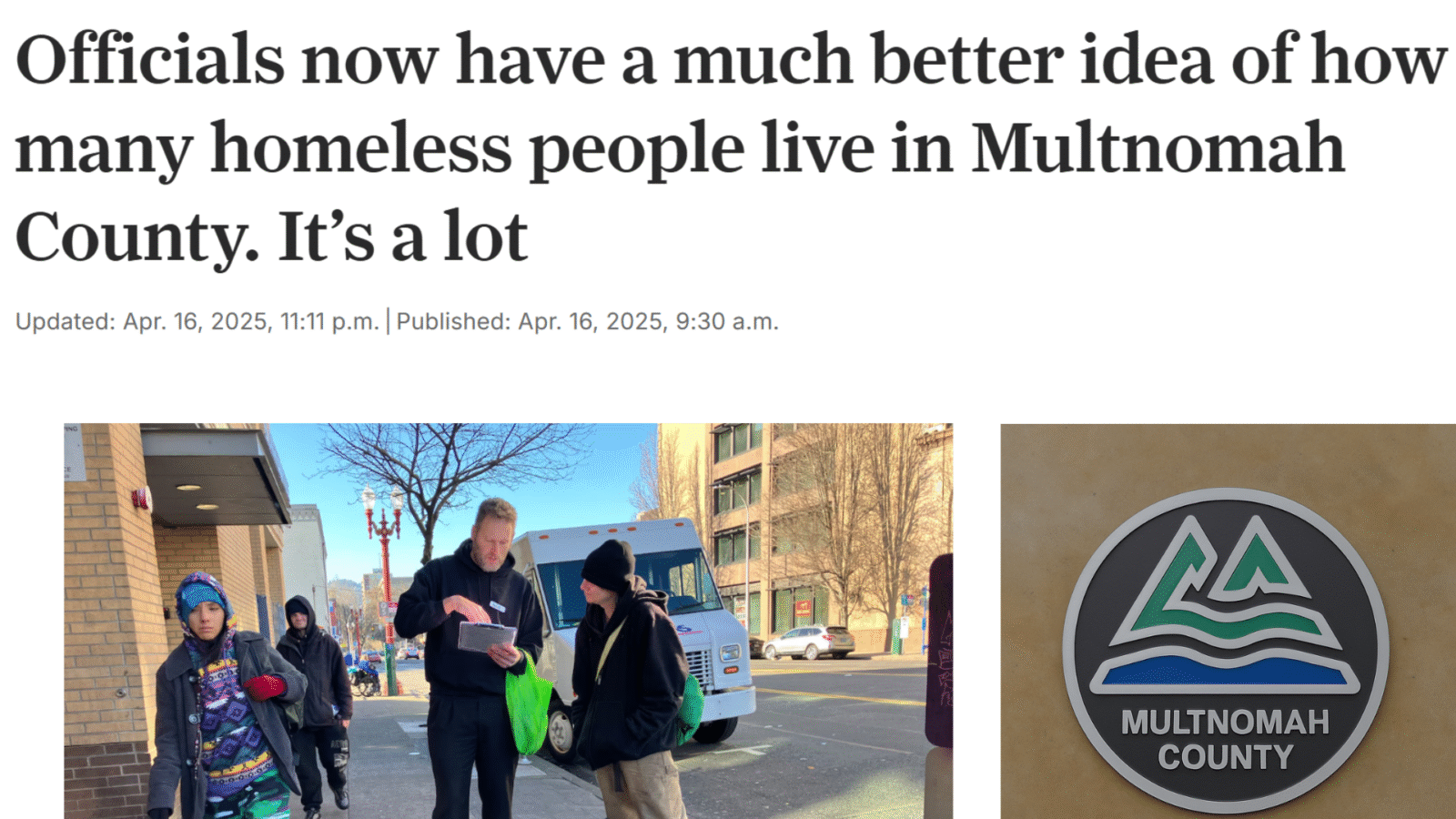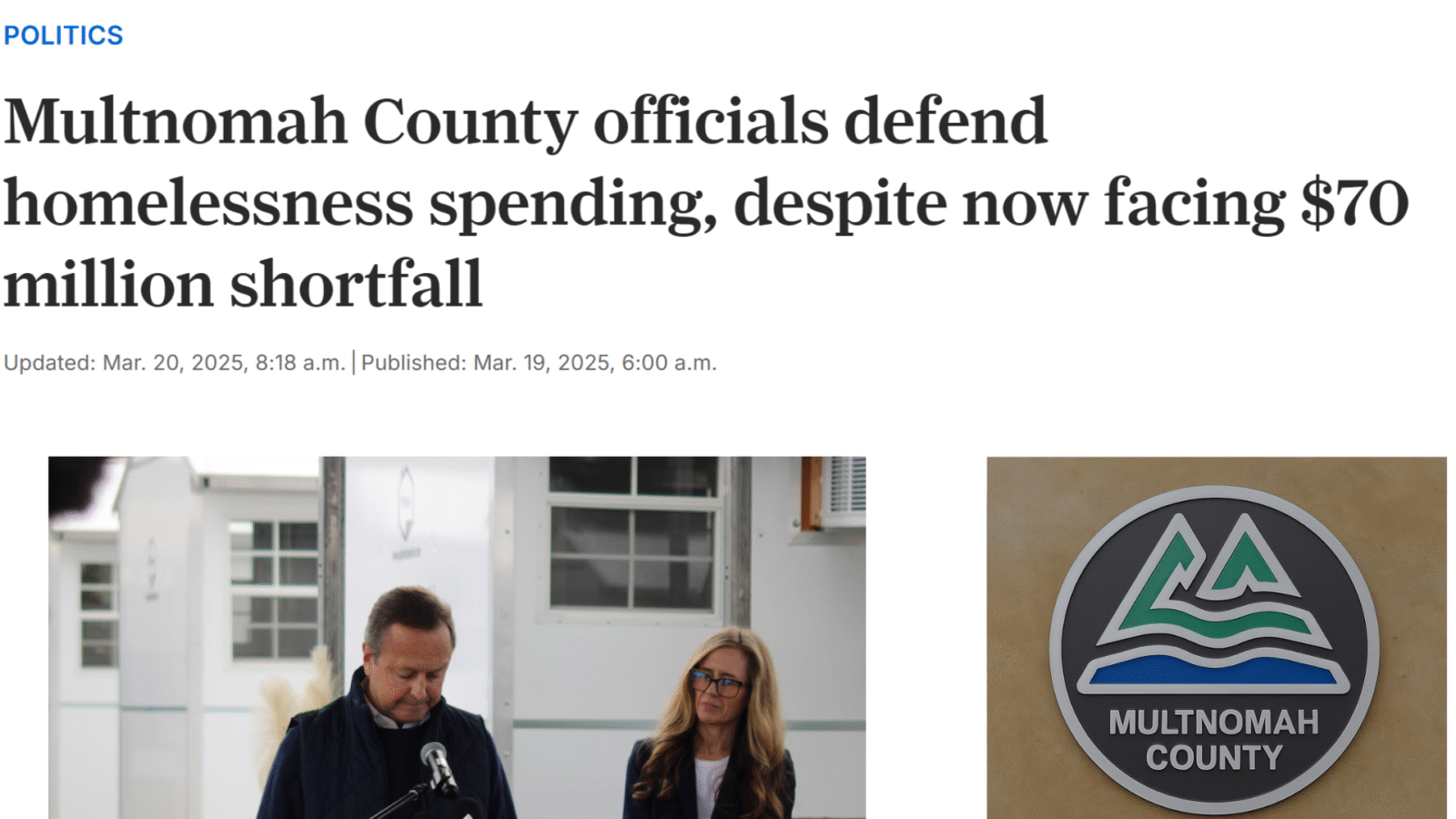This whistleblower action should include the leaders in charge of perpetuating Multnomah County’s failed mental health system.
A year and a half ago, as a Multnomah County Commissioner, I wrote to fellow board members calling out the County’s egregious failure to fulfil its responsibility as the Local Mental Health Authority. I asked Governor Kotek to intervene. I’ve copied my January 2024 communication below.
Some meetings were held, promises were made that the County would do better, and things have only gotten worse. The County’s failed mental health system continues to cause devastating harm to countless individuals and families, plays out in the region’s worsening homelessness crisis, impacts public safety, and wastes hundreds of millions of dollars.
Many experts have been whistleblowing for decades about the failure. Meanwhile, County leadership distracts and deflects by blaming the state and federal governments and calling for more money. Legislators tout their commitment to behavioral health by spending hundreds of millions of dollars. But what they all fail to understand (or admit) is that money isn’t the problem. The problem is a lack of leadership, a lack of a comprehensive plan to coordinate and use existing resources effectively, and a lack of accountability.
Here is the email I sent to the Multnomah County board and Governor Kotek:
Dear Colleagues,
Oregon State law directs counties to act as the Local Mental Health Authority (LMHA) for their regions. For years, Multnomah County has not fulfilled this obligation on either a statutory or moral basis.
Throughout the past seven years of my term as County Commissioner, I have expressed concern about this both publicly and privately, and have pushed for the County to do more. At this time, I have lost confidence that the County can fulfil its role as the LMHA. I believe that this requires intervention at the State level.
At the start of my term, I commissioned an analysis of the Multnomah County Mental Health System. The final 134-page Report was presented to the Board, the former Chair’s office and the public in August 2018. It spurred the next phase of work – a stakeholder engagement process called Analyse, Align and Act, which led to the development of the Blueprint for Better Behavioral Health, a framework for creating a functional and coordinated behavioral health continuum. I was hopeful that this effort would transform our behavioral health system to serve individuals in our community with the compassion, services and supports they need and deserve to live their best lives.
Unfortunately, the former chair deprioritised this project before its completion. And since then we have seen many additional failures to fulfil the County’s obligation as LMHA:
- Decimation of the original BHECN process
- A failure to address the fentanyl crisis
- The failed relationship between the Health Department and the jails, condemned in the scathing National Institute of Corrections’s report
- The unprecedented number of deaths occurring in our jails over the past year
- The turnover of five Behavioral Health directors in six years and seven Health Department directors in seven years
- The failure to hire a new permanent Behavioral Health director after almost a year, when mental health and addiction issues have been at the heart of virtually all the major issues facing our community
- The failure to have a coherent, coordinated plan around the youth mental health crisis
While the County has some scattered elements of a behavioral health system, our failure as the LMHA has led to terminal dysfunction in coordinating, convening and planning. It has also led to other entities stepping in to compensate for our deficits, for example:
- The City of Portland, with Portland Street Response and the Police Bureau’s Behavioural Health Unit
- CCOs CareOregon and HealthShare are directing processes and programs to address behavioural health crisis care
- Central City Concern and OHSU are investigating systems gaps and making recommendations to fill them
It must, of course, be acknowledged that the COVID pandemic placed additional strain on our system as a whole. But it was troubling that when our behavioral health crisis worsened during the pandemic, and the County, as LMHA, should have been bringing people together like never before, County leadership used the pandemic as an excuse for failing to meet our statutory responsibilities, not a call to action.
Details about the role of an LMHA have never been shared with commissioners by the Behavioral Health Division. I have some unique insight into LMHAs, given my experience as a physician providing behavioral health crisis services, and also as a lawyer who enjoys getting into the nitty-gritty of statutes. I have therefore prepared a summary version of the Oregon Revised Statutes section establishing counties as LMHAs for your convenience, and have linked the actual ORS sections here. I also offer the following ultra-condensed summary:
ORS 430.630 directs counties to establish community mental health programs and substance use disorder treatment continuums and establishes counties as regional LMHAs. The primary responsibility of an LMHA is to establish a Comprehensive Local Plan for mental health and make sure that it is being implemented.
To my knowledge, Multnomah County does not have a current Comprehensive Local Plan (CLP), even though the requirements are outlined quite well in statute. It certainly does not have a functional continuum of behavioral health care, nor has it coordinated or led efforts to create one.
Our failure in fulfilling our statutory and moral responsibilities as the Local Mental Health Authority has directly led to and/or exacerbated multiple behavioral health crises in our community. You only need to look at recent headlines to see some of the tragedies that have occurred due to a lack of an effective behavioral health continuum, and these heartbreaking stories are just the tip of the iceberg. As one of the many people working in healthcare and social services, I see the impacts regularly in the ER and as a volunteer caring for people experiencing homelessness.
At this time, I do not believe that the situation is salvageable without external intervention, and the State must step in to ensure that our legal obligations under ORS 430.630 are met for the people we are meant to serve.
I therefore formally request that Governor Kotek intervene to address Multnomah County’s failure to create and implement a comprehensive local behavioral health plan.
I realise this is a very serious request, and I do not make it lightly. But we are facing numerous behavioral health crises, things are getting worse before our eyes, and we have yet to see any critical action being taken by County leadership that has the potential to reverse our trajectory. People residing in our County are suffering and dying. We need to do something NOW.
I have copied Governor Kotek, her Behavioral Health Policy Director, Juliana Wallace, and Oregon Health Authority Behavioral Health Director Ebony Clarke on this message and formal request.
I sincerely hope the seriousness of this situation results in action to help the untold, unaddressed suffering in our community, and I look forward to further engagement with each of you on the subject of the LMHA.
Respectfully,
Sharon Meieran

